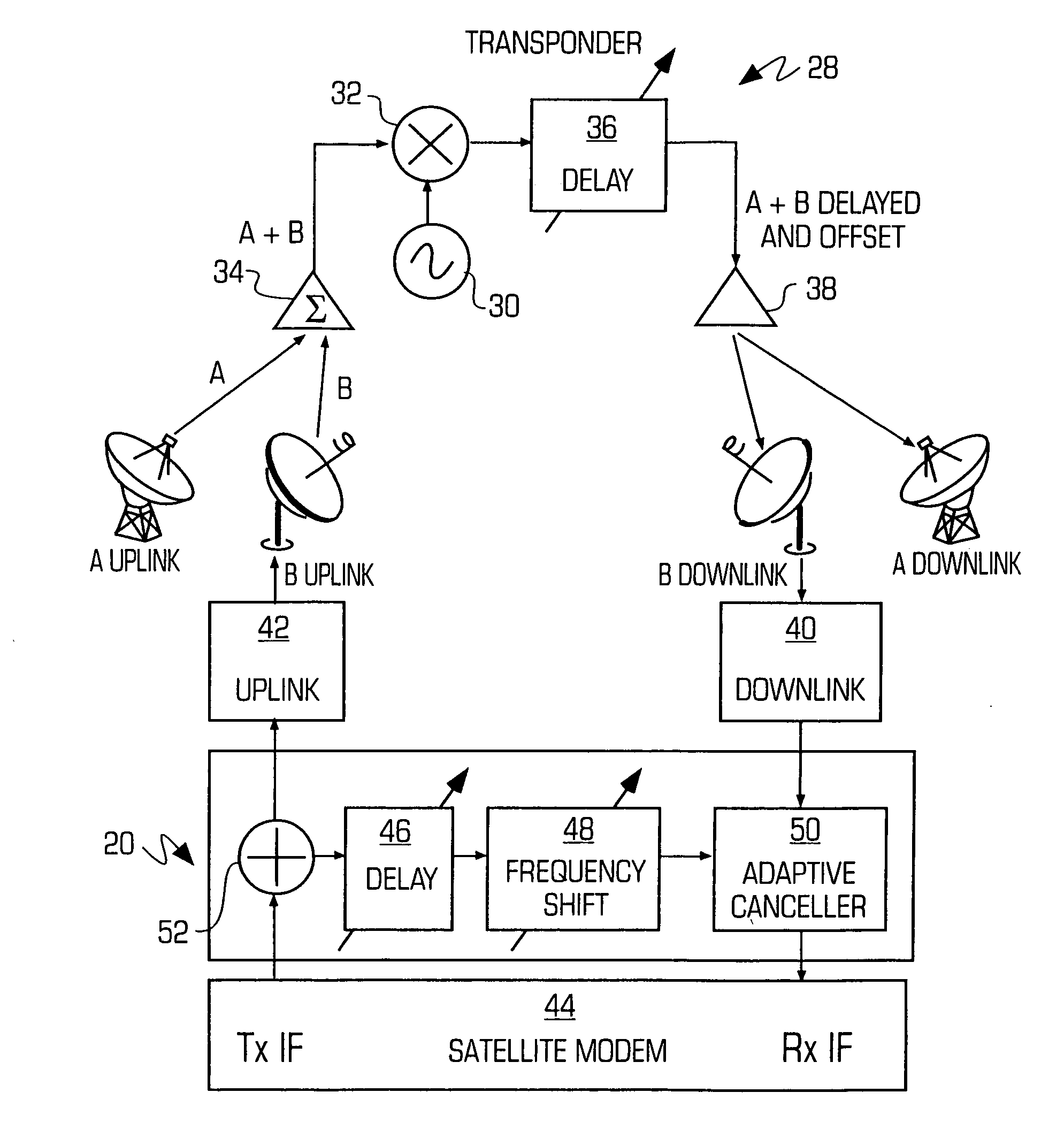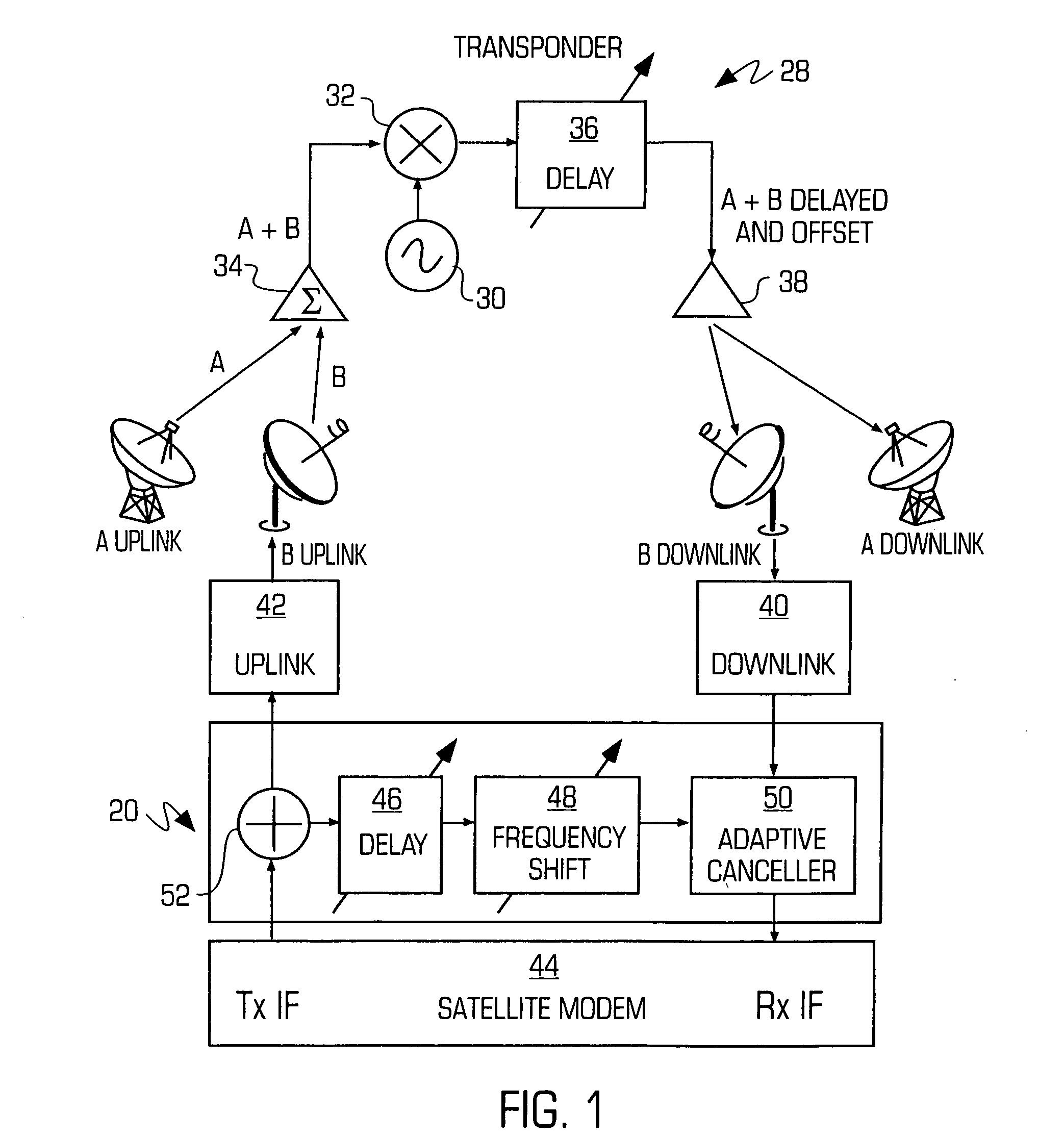Adaptive canceller for frequency reuse systems
a frequency reuse and canceller technology, applied in the field of communication systems, can solve the problems of high cost of system resources, double the bandwidth of unidirectional communication links, and limited transponder bandwidth, and achieve the effect of high efficiency and efficient manner, and easy us
- Summary
- Abstract
- Description
- Claims
- Application Information
AI Technical Summary
Benefits of technology
Problems solved by technology
Method used
Image
Examples
Embodiment Construction
[0023] This invention is particularly applicable to satellite communications systems in which a satellite transponder translates the frequency of a received uplink signal to a new frequency and retransmits the received signal as a downlink signal on the new frequency, and will be described in that context. It will be appreciated, however, that this is illustrative of only one utility of the invention, and that the invention may be employed with any communication system which relays a received signal of interest as a composite signal that includes a replica of the receiving site's own transmitted signal. Examples include wireless and wireline communications systems.
[0024]FIG. 1 illustrates diagrammatically a satellite communications system embodying a canceller system 20 in accordance with the invention. The satellite communications system may comprise first and second transmit / receive sites A and B, respectively. Each site transmits an uplink signal to a satellite transponder and r...
PUM
 Login to View More
Login to View More Abstract
Description
Claims
Application Information
 Login to View More
Login to View More - R&D
- Intellectual Property
- Life Sciences
- Materials
- Tech Scout
- Unparalleled Data Quality
- Higher Quality Content
- 60% Fewer Hallucinations
Browse by: Latest US Patents, China's latest patents, Technical Efficacy Thesaurus, Application Domain, Technology Topic, Popular Technical Reports.
© 2025 PatSnap. All rights reserved.Legal|Privacy policy|Modern Slavery Act Transparency Statement|Sitemap|About US| Contact US: help@patsnap.com



